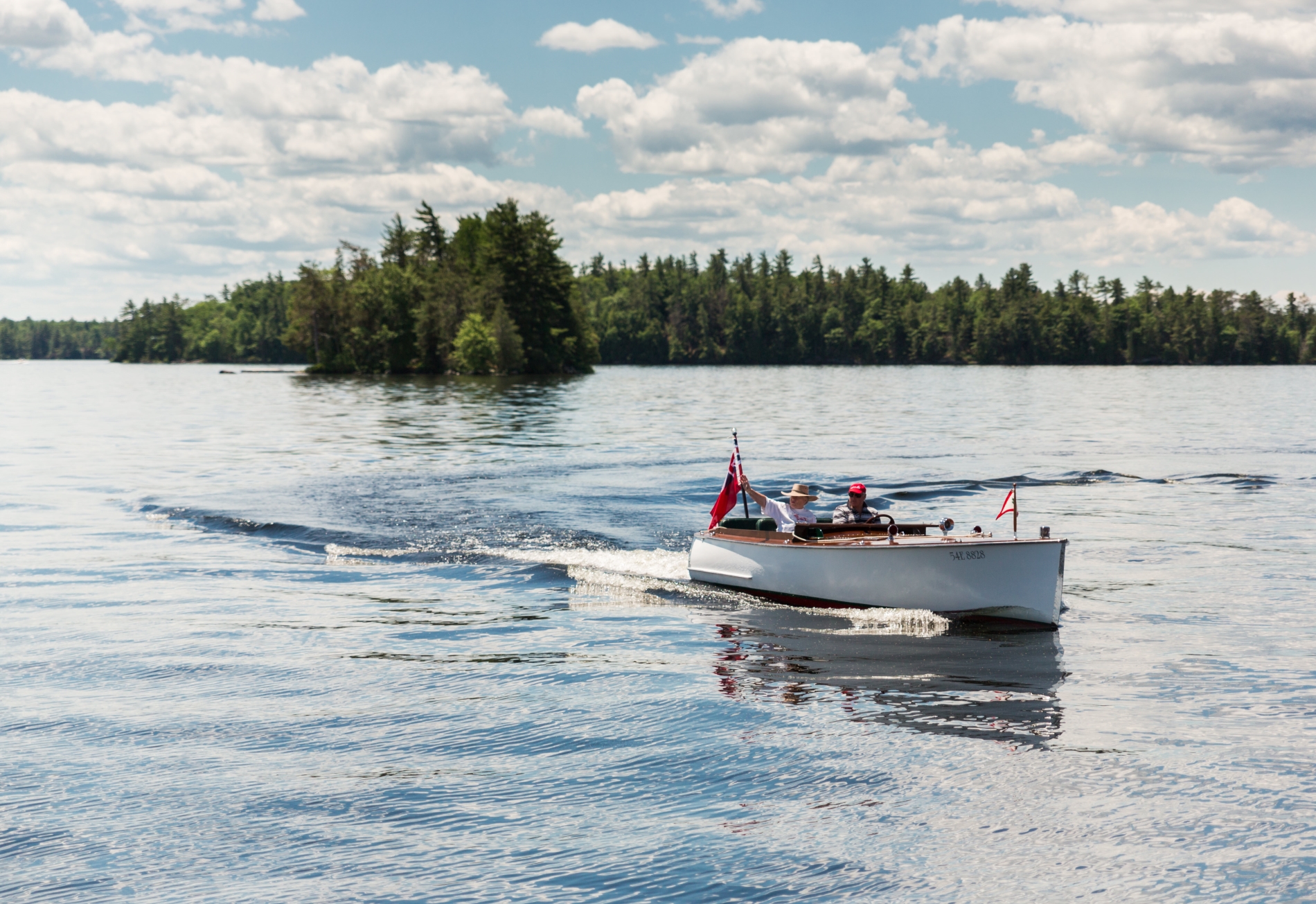
Heritage Walks
Port Carling Mural Walk
Water surrounds you on this trek through the picturesque town of Port Carling situated at the "hub of the lakes". This urban route offers many creative ways to enjoy a walk. Stop and view the Port Carling Mural. If shopping suits your fancy visit the many shops all along the way. Enjoy!
Stops Along the Way
| Hanna Park |
Port Carling is reputed to be the oldest village in Muskoka. Incorporated in 1896, it was named after the Hon. John Carling who ordered the locks built. Hanna Park was once where steamers would be hauled up on shore for the winter. Mrs. Sara Hanna donated land for Hanna Park in memory of her husband, William. It opened in 1924 as a motor park for the travelling public. Over 300 volunteers built the Muskoka Discovery Playground in 2000.  |
| Port Carling Community Centre and Arena |
|
Captain William Board built the first hockey rink in Port Carling around 1900. Local hockey teams were renowned for their stick handling, developed by dodging telephone poles on an earlier outdoor rink. Teams from Port Carling, Minett, Walker’s Point, Bala and Milford Bay played regularly. In 1928 a new rink was built near the current arena. The present Port Carling Arena was built in 1974 for $103,500 with major renovations in 2002. The Port Carling Memorial Community Centre officially opened June, 2001. The Cenotaph represents soldiers from four wars.
|
| Township of Muskoka Lakes Municipal Office |
|
Port Carling has been served by several schools through the years. In 1895 the school board budget was $350. The first teacher, Sarah Longhurst, was paid monthly if funds permitted. The first schoolhouse, built by Robert Bailey in 1896 on Ferndale Road, was destroyed by fire. In 1906 this property was purchased and a two-room school was built. Electric lights were added in 1922. In 1937 a Continuation School started for Grades 9 to 12 which meant students no longer had to board in Bracebridge. The school was closed in 1969, and the school building is now part of the Township of Muskoka Lakes Municipal Offices. Ontario's Lt. Governor (2002-2007) James Bartleman attended school here from 1947-1958. As a result of the devastating 1931 fires, 20 volunteers formed the first Fire Brigade under Chief Charlie Duke, who was shortly replaced by Bev 'Ponty' Cope. Over the years these volunteers saved many lives and properties. |
| Muskoka Lakes Public Library - Port Carling |
This property was the fair grounds from 1875-1907. The Fall Fair was so important that extra passenger steamers were run from Bracebridge and Gravenhurst. The land was deeded in 1895 for a Town Hall. In 1887 the Mechanic’s Institute started a reading room and academic night school courses for workers to complete their education. This became the Port Carling Library in 1895 with membership cards first issued in 1898. In 1949 the Straw Hat Players started summer theatre here with such famous names as Ted Follows, Barbara Hamilton, Robert Goulet, and Donald Sutherland. The Town Hall was demolished in 2000 and the present library was opened 2001.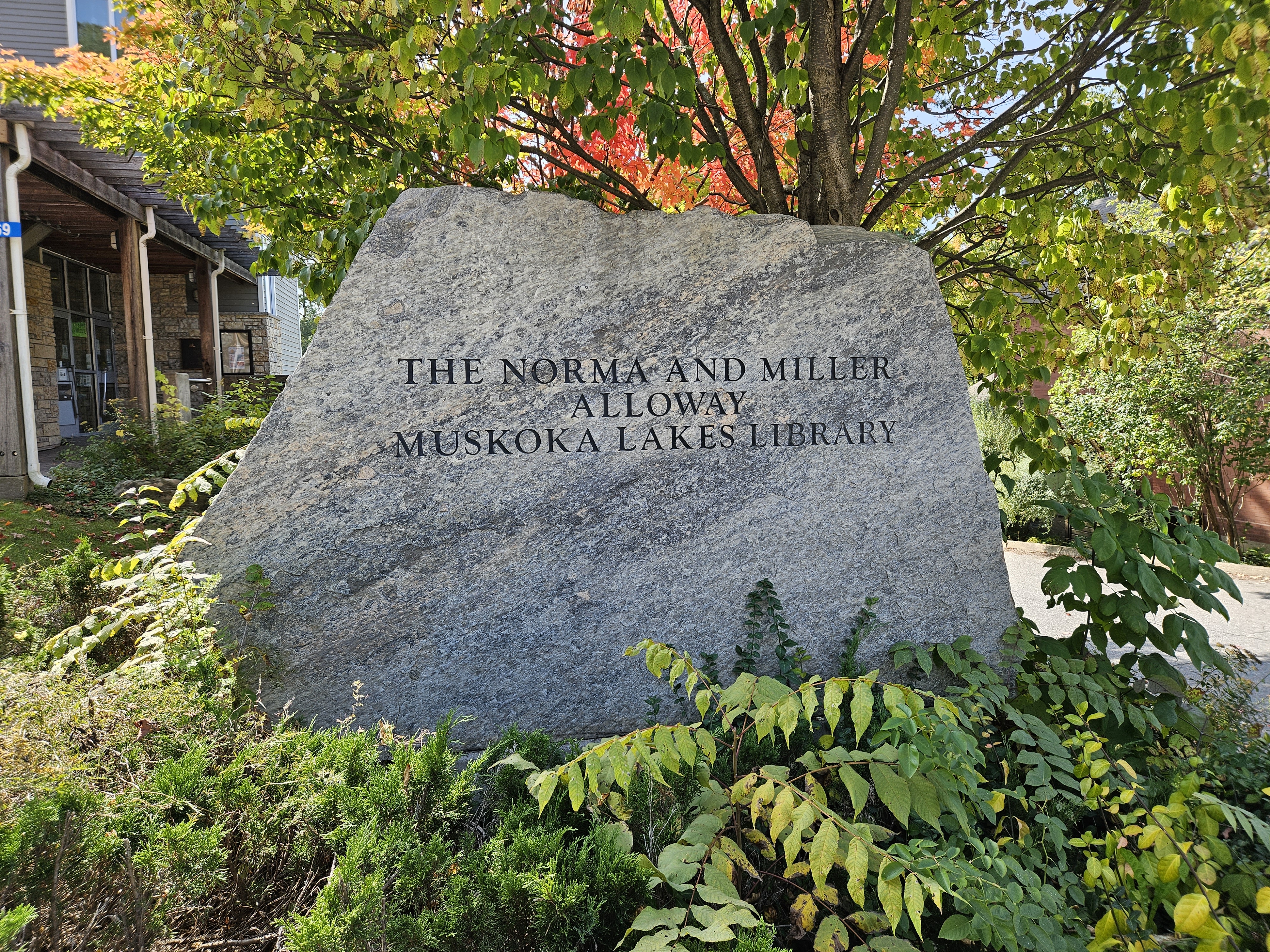 |
| Joseph Street, Port Carling |
|
Knox Presbyterian Church is one of the oldest standing buildings in Port Carling and a favourite subject for artists. The church was built in 1876. Logs were donated and cut into boards and timber for free at the Wallis Mill. Others donated sash, doors, and glass. The belfry was added in 1912 for the bell donated by Mrs. J.R. Moodie of Hamilton. Knox College students conducted summer services until Port Carling and Bala obtained their first ordained minister, Rev. MacKay in 1905. Next door, at 95 Joseph St, the Johnston Boat Works/Disappearing Propeller Boat Co. operated in the 1910s and 1920s. The home was originally the matrimonial home of William Johnston Sr. The boat works were just over the hill at the waterfront. William Johnston Jr. designed the Disapppering Propeller Boat (Dippy) in 1914, where the propeller pushed up into a metal box for protection when the skeg hit a rock or log. At its height, the Boat Works had over 300 boats to rent. The Disappearing Propeller Boat Co. was the largest motorboat building company in the Canada by 1922 and had sales around the world. Sadly, the business failed in 1924. Beside this, at 97 Joseph St, Mr. William Massey opened the first garage, The Port Carling Garage, in 1923 and owned the first motorcar here. He used the motor launch, Vedette, as a water taxi. Space was rented to a tailor shop and Wing's Chinese Laundry. The garage was destroyed by fire in 1980. Across the street was the Blacksmith Shop, established by Mr. George Massey with Mr. C.J. Amey’s harness shop upstairs. The shop was replaced by Arnold Stephen’s Grocery in 1926. The original St. James the Apostle Anglican Church was built on the other side of the bridge in 1875. The Earl of Dufferin, Governor General of Canada, donated seats on his 1874 visit. Fire destroyed the church, but parishioners saved the stained-glass window (in memory of Rev. E.S. Stubbs in 1883) and installed it in the new church, consecrated in 1913. Next door, at 98 Joseph St, Bracebridge & Muskoka Lakes Telephone Company was formed in 1907. In 1932 Medora and Wood Telephone System took over and built a new exchange with Jim Oliver as first manager. Bell Telephone took over in 1956. |
| James Bartleman Island |
|
The Baisong Rapids were a traditional seasonal camping ground for First Nations who named the area Obajewanung (gathering place). Port Carling was named in 1869 after the Hon. John Carling, who ordered the construction of the locks. The locks were opened in 1871 to allow the steamship Wenonah to haul supplies and passengers into the upper lakes. They were enlarged to accomodate the Sagamo in 1902. By the early 20th century the area saw considerable traffic, with steamships carrying supplies up lodges, cottages, mills, and settlers, as well as many new immigrants travelling north to their land grants. Coming south were great barges of tan-bark for the Bracebridge tanneries, barge loads of lake trout for Toronto, farm produce and animals for market, and isolated settlers coming to town for a fair or annual shopping trip. Massive log booms choked the river for days on their way to southern mills. Today, lock traffic is primarily recreational. The first bridge over the Indian River was a single lane at lock level, opened in 1871. In 1902, Hanna's scows were fitted up to allow teams to cross while bridge timbers were replaced. The road was widened and the current lift bridge was constructed in 1971. Island Park was home to tennis courts, bowling greens, a theatre and poolroom, a fish hatchery and various boat liveries. The Muskoka Lakes Museum was built in 1967. Hall House, an original settler’s home forms part of the museum. Major expansions took place in 1971 and 2002. This island is now named in honour of James Bartleman, Ontario's Lt. Governor from 2002-2007. |
| Lock Street |
|
Lock Street was once home to the Port Carling's first hotel. The hotel was built in 1871 as The Polar Star, enlarged in 1886 to become the Interlaken Hotel, and finally renamed the Port Carling House. Although demolished in 1970, the retaining wall and steps up to the lawn of this fine old hotel remain. The Port Carling Boatworks were started by W.J. Johnston in 1925. They built rowboats, punts and the affordable SeaBird motor launch. Rebuilt after the 1931 fire, the boatworks was sold to the MacLennan family in 1965. Many of the original structures remain. |
| Port Carling Wall |
|
The 111-by-45-foot photo mosaic, affectionately called The Wall, provides a breathtaking welcome to Port Carling. It comprises 9,028 pictures that together create the image of the RMS Sagamo passing through the Port Carling locks circa 1922. Viewed up close, however, each individual photo captures a moment of time in the lives of residents of Port Carling during the village's first century (1860-1960). It all began in 2004 with a suggestion from Don Oliver to the Mayor Susan Pryke, that the main street of Port Carling needed a facelift. The Mayor challenged Mr. Oliver to get involved, so he recruited Ian Turnbull, Ian Wallace and Greg Mannion to help him out. Within one year these four men had researched, planned and designed a very complex project. Furthermore, they were able to raise all the necessary funds to implement it and set up a reserve for its continued maintenance. In due time the Bracebridge-based company Forrec, known for their design-build capabilities, was brought into the equation. In collaboration with Toronto Digital Imaging and Magic Mosaics they produced a unique and fascinating historical mosaic known as The Wall. Its purpose was fourfold: to serve as a spectacular tourist attraction; to stimulate further revitalization of Port Carling; to foster community pride and to reflect the heritage of Muskoka Lakes Township. Located on the large south-facing wall of the former Hanna store, the Wall is visible from District Road 118 and to boats in the bay. To locate, collect and digitally scan the photographs, the project had support from the Township of Muskoka Lakes and volunteers and staff from the Muskoka Lakes Museum and the Norma and Miller Alloway Muskoka Lakes Library. In total there are 905 individual photographs, which are all displayed in a nine-foot-high “viewing section” in the lower portion of the mural. Above the viewing strip the 905 photos are replicated over and over in a fashion that allows the bigger picture of the Sagamo to appear when viewed from a distance. The mural is owned and maintained by the Township of Muskoka Lakes. It was officially unveiled on August 1 2005 by the Lieutenant Governor of Ontario James K. Bartleman, with assistance from the Mayor of the Township of Muskoka Lakes Susan Pryke and the Chair of the District of Muskoka Gord Adams. At that time it was the largest historic photo mosaic mural in the world. This wonderful Port Carling project has achieved all four of its goals. It is an ingenious contribution to the cultural heritage of Muskoka. In 2007, The Wall received a Built Heritage award from the Muskoka Heritage Foundation. |
| Downtown Port Carling |
|
Mr. William Hanna established a thriving grocery business in 1881 near this location, moving to this site in 1900. In 1888, Hanna’s chartered their first supply boat and within five years were operating their own steamboats, Mink and Newminko. The Hanna Company became the largest of its kind in Muskoka selling everything from fresh meat to coal oil, and candles to clothing. Cottagers would raise a white flag when they wanted the steamers to stop. The first Telegraph and Post Office was here 1900 until 1906. An October fire in 1931 destroyed the Hanna Co. store and a dozen more buildings, virtually wiping out the village core. Electric fire pumps failed when hydro lines were burned. Residents formed a bucket brigade until gasoline powered pumps arrived from Bracebridge and Bala. In 1961 the building was taken over for a Red & White store and later an IGA. The Twenty-One Club operated near here in the 1940's and 50's. Featuring a dance floor, sidewalk cafe, and a restaurant, it was one of the hot spots of Muskoka. The Bank of Nova Scotia, first bank in Port Carling, was located next door. It opened in 1922 to handle the payroll for the Disappearing Propeller Boat Company Ltd. Nearby is Duke Boats, built on site of John Matheson’s boat works (one of finest craftsmen of his era). Charlie Duke began boat building in 1910 with brother Bert, and partnered with Ernie Greavette in 1924. They specialized in small low power motor launches. In 1940 they built 27’ motor cutters for the Royal Canadian Navy. Restoration is the company's main business now. |
| Settler's Fort Port Carling |
|
Dr. William Canniff, Port Carling's first resident doctor, located his office at 110 Medora St in 1895. Dr. R.E. Joyce came in 1923. Prior to that, people had to deal with typhoid fever, tuberculosis, influenza, pneumonia, childbirth and accidents on their own. The Port Carling Methodist Church was deeded from the Crown to Rev. Lachen Taylor in 1872. The Church would later join the United Church in 1925. The Hanna Memorial window was inserted during redecoration in 1920, with subsequent additions in 1967 and 2001. Across from the United Church was the Edenvale Lodge, later the Greene Slate Inn. Johnston House & Settler’s Fort was located at 114 Medora St. A boat builder and postmaster, Benjamin Hardcastle Johnston, built this house in the late 1800’s. The remains of Mr. Johnston’s fort, built to protect the village from Fenian raids (until 1871), may be seen above the house. The fort was a fine location to watch for traders coming up river. William Hanna used the old fort for one of two water towers in the village from 1900 until 1947 when the Village of Port Carling bought out both water companies and erected a cement water reservoir. The childhood home of James Bartleman, Ontario's Lt. Governor 2002-2007, was also located near Ferndale Rd. |
Bala Heritage Walk
The Town of Bala consists of three islands interconnected by bridges over beautiful waterfalls. There is a spectacular view of the Moon River and the falls on this walk. These falls funnel through Bala enroute to Georgian Bay. This is just a taste of the many historical sites that are along this self-guided walk of historic Bala. Come and enjoy the walk and a bit of Bala hospitality.
Stops Along the Way
| Windsor Park |
This was the location for the original tourist establishment built in Bala by Mr. and Mrs. John Board in 1890 and was known as the "Clifton House". It was sold to Mr. William McDivitt in 1900 and was renamed the "Windsor Hotel". The Hotel was destroyed by fire in 1907 but was rebuilt the same year by Mr. McDivitt as the "New Windsor Hotel". The Hotel operated until 1967 when it was demolished by the Town of Bala to be used as a public park. It is now the site of the weekly summer water ski show. |
| Bala Bay |
Throughout the first half of the 20th century, Bala Bay was the hub of steamship traffic in Muskoka. Vessels such as the Cherokee, Islander, Ahmic, and Segwun brought vacationers from all over Ontario across the Muskoka Lakes. Road access to Muskoka was expanded throughout the 1950's and 1960's, which led to a decline in rail and steamship traffic. The final steamships visited Bala Bay in 1964. 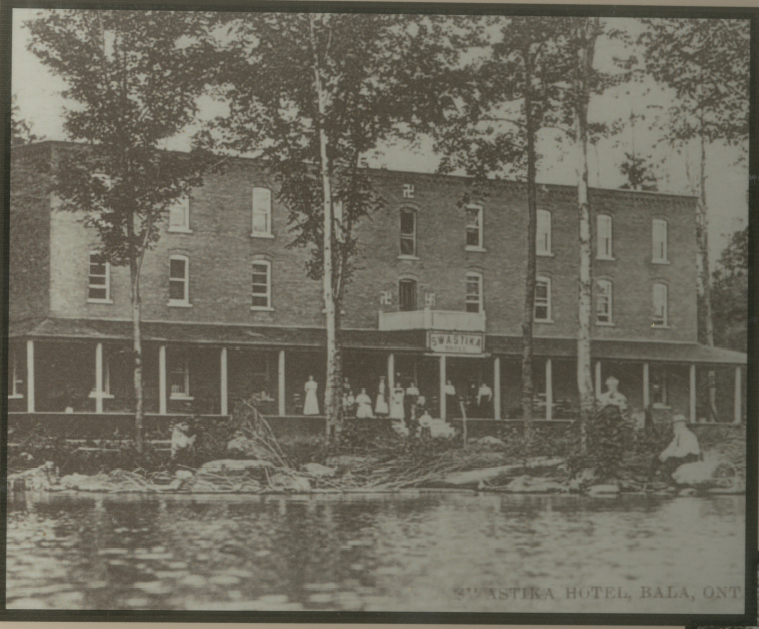 |
| Bala Falls Road |
In 1910 Walter and Margaret Langdon built an ice cream parlour, an outdoor dance hall and an indoor skating rink on this site. Gerry Dunn purchased the ice cream parlour in 1929. The outdoor dance hall was enclosed, a soda fountain and an area for tables were added. The current dance hall was constructed in 1942. For more than 20 years, the best big bands played here; names like Louis Armstrong, Count Basie, Tommy and Jimmy Dorsey, Duke Ellington, Stan Kenton, Guy Lombardo, and the Glen Miller Band. This was the place "where all Muskoka danced". The tradition of summer music continues to this day.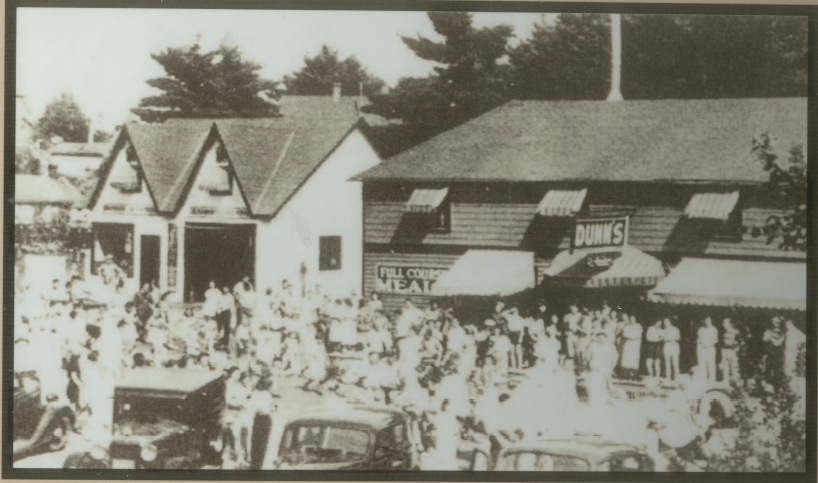 |
| Bala Cenotaph |
The Bala Cenotaph was constructed in 1965, and honours those who have served and sacrificed in the Canadian Armed Forces, RCMP, UN peacekeepers, and their families. Bala was incorporated as Ontario's smallest town in 1914, when many of Bala's young men were serving overseas in the First World War. |
| Bala Falls |
|
Everything that flows into the Muskoka Waterways from the headwaters in Algonquin Park passes through here on its way to Georgian Bay. When Thomas Burgess settled here the level of Lake Muskoka used to vary as much as 3 metres between Spring and Fall! Today levels are carefully controlled here at Bala Falls. The North Falls have historically served as the main exit for logs from Bala Bay to the Moon River. The North Dam was installed in 1873 to raise the water level in the bay 6 to 8 feet. Early explorers and modern-day voyageurs use the area adjacent to the Falls as a portage from the Moon River to the Muskoka Lakes. Today this is an excellent vantage point to view spectacular sunsets down the Moon River. In 1924, a hydro electric generating plant was built by the Bala Electric Light and Power Company. This power station contained a 400 hp propeller-type vertical shaft connected to a 312 KVA generator rated at 2300 volts. The power station produced power for the town of Bala from 1924 to 1957 and then was demolished in 1972. |
| Diver's Point/Legris Park |
Diver's Point has been noted for its recreational use by residents and tourists alike, used for both boating and scenic views. Since the 1960s, Diver's Point has been used for scuba diving, giving the site its name. Legris Park honours Margaret and Garth Legris, founders of Communities in Bloom.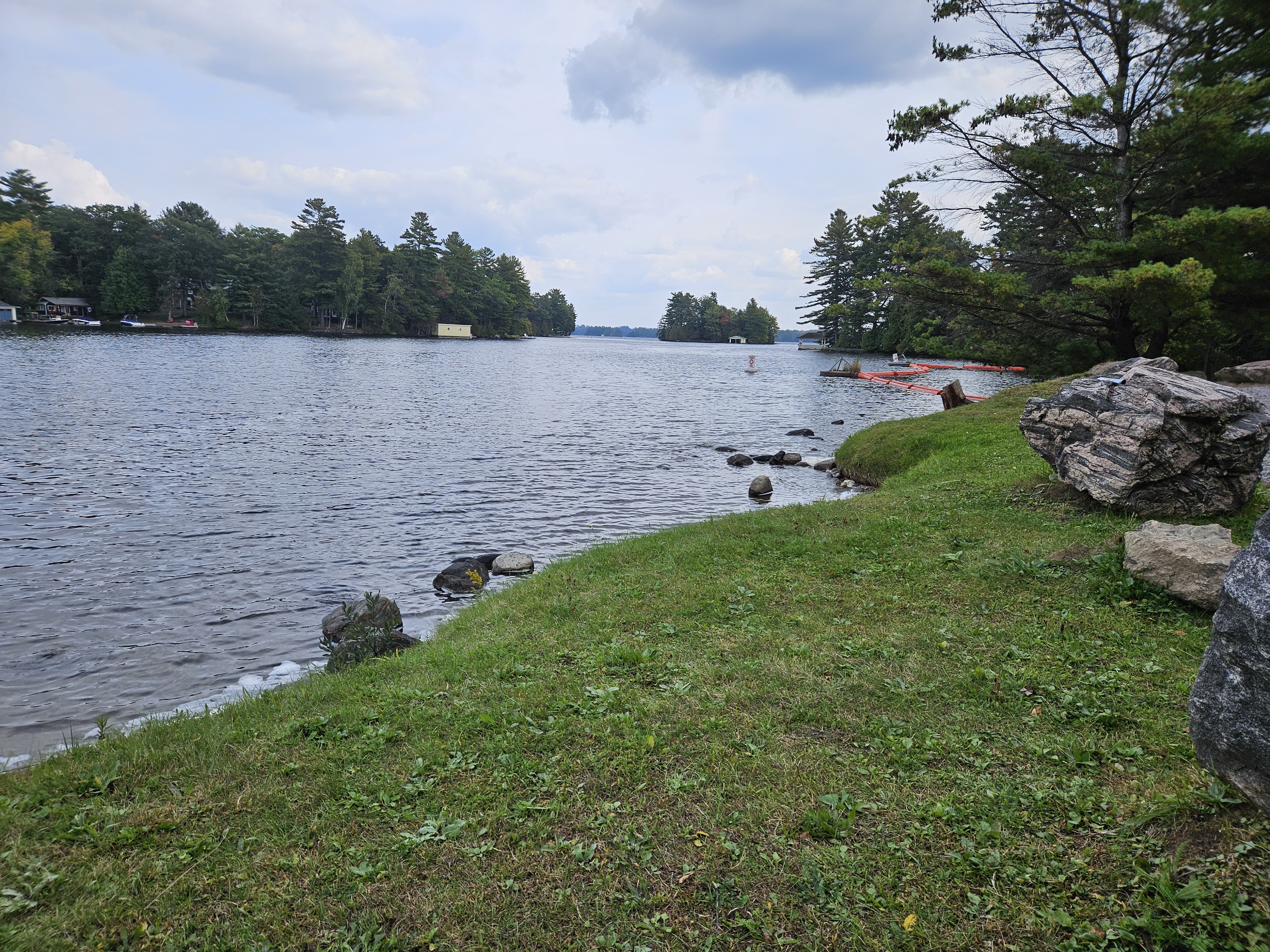 |
| Precambrian Shield |
These outcroppings of the Precambrian Shield are some of the oldest rocks in the world. The rough terrain along the shores of the Moon River impeded early settlement efforts in this area. The current formation was exposed in the 1960s during the expansion of then-Highway 69 (today's Muskoka Road 169) through downtown Bala. The expansion of the highway network through Muskoka greatly increased its accessibility and expanded its economy. 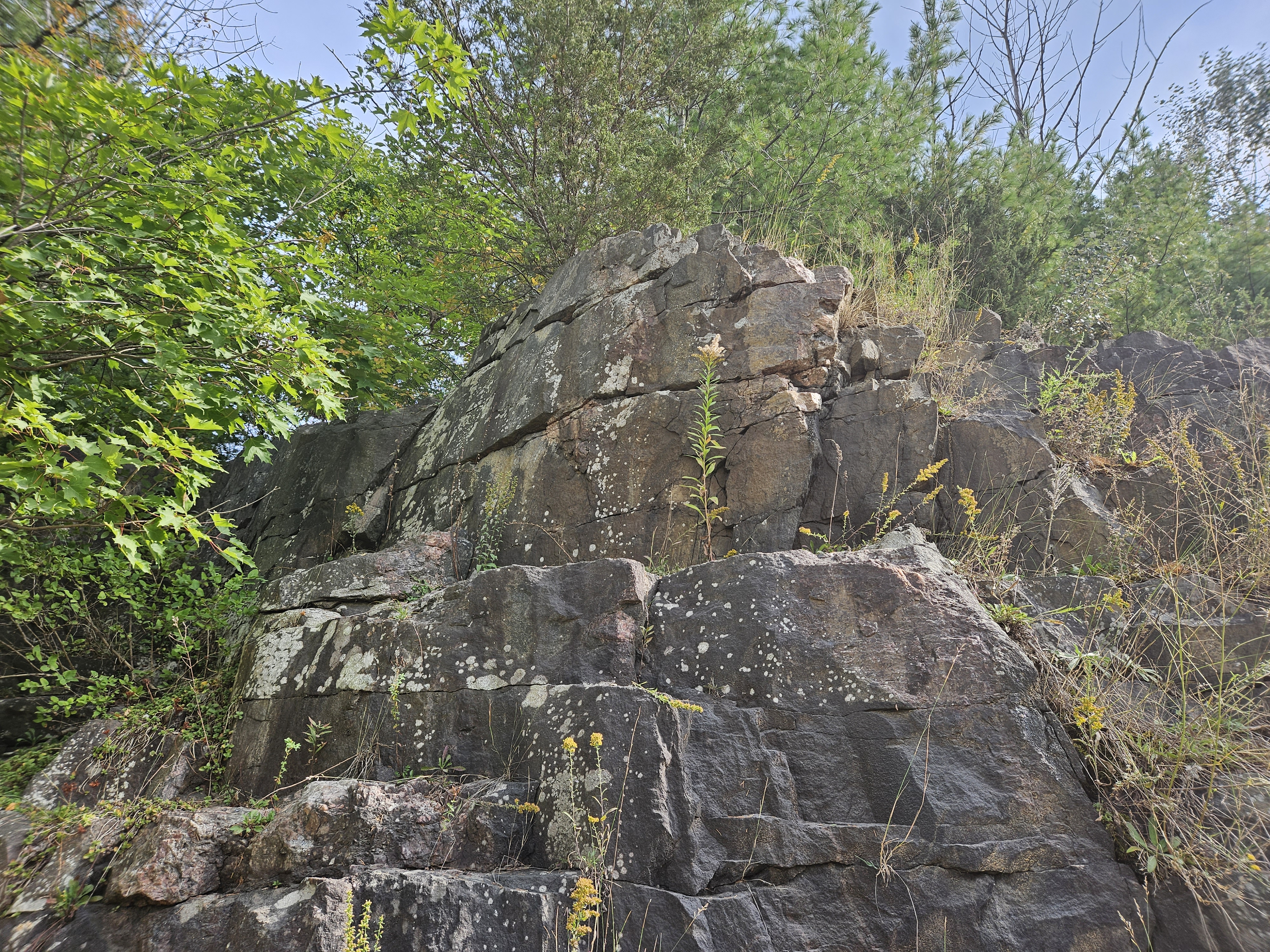 |
| Moon River Rock |
Many have appreciated Muskoka’s forests, waterways and rock since arrival of the first Indigenous groups. Over the years, countless people portaged, swam and fished beside the Bala Falls. In 1888, the Pittsburgh Rod and Gun Club camped here and two members, Hiram Depuy and G.G.V. Wilson, chiseled their names into the granite. In 1919, the brothers W.A.T. and G.G. Birrell added their names upon their return from the First World War. The inscriptions were later buried, likely when the highway was built in the early 1960s. In 2017, during excavation for a new hydro plant, Jean-Marie Gagné, site supervisor for Swift River Energy Ltd., spotted the old signatures in the mud and rubble. Through the efforts of many concerned citizens, including Muskoka’s Architectural Conservancy Ontario, Jack Hutton, the Municipal Heritage Committee and Swift River Energy Ltd., this archaeological find has been saved to tell the story for future generations.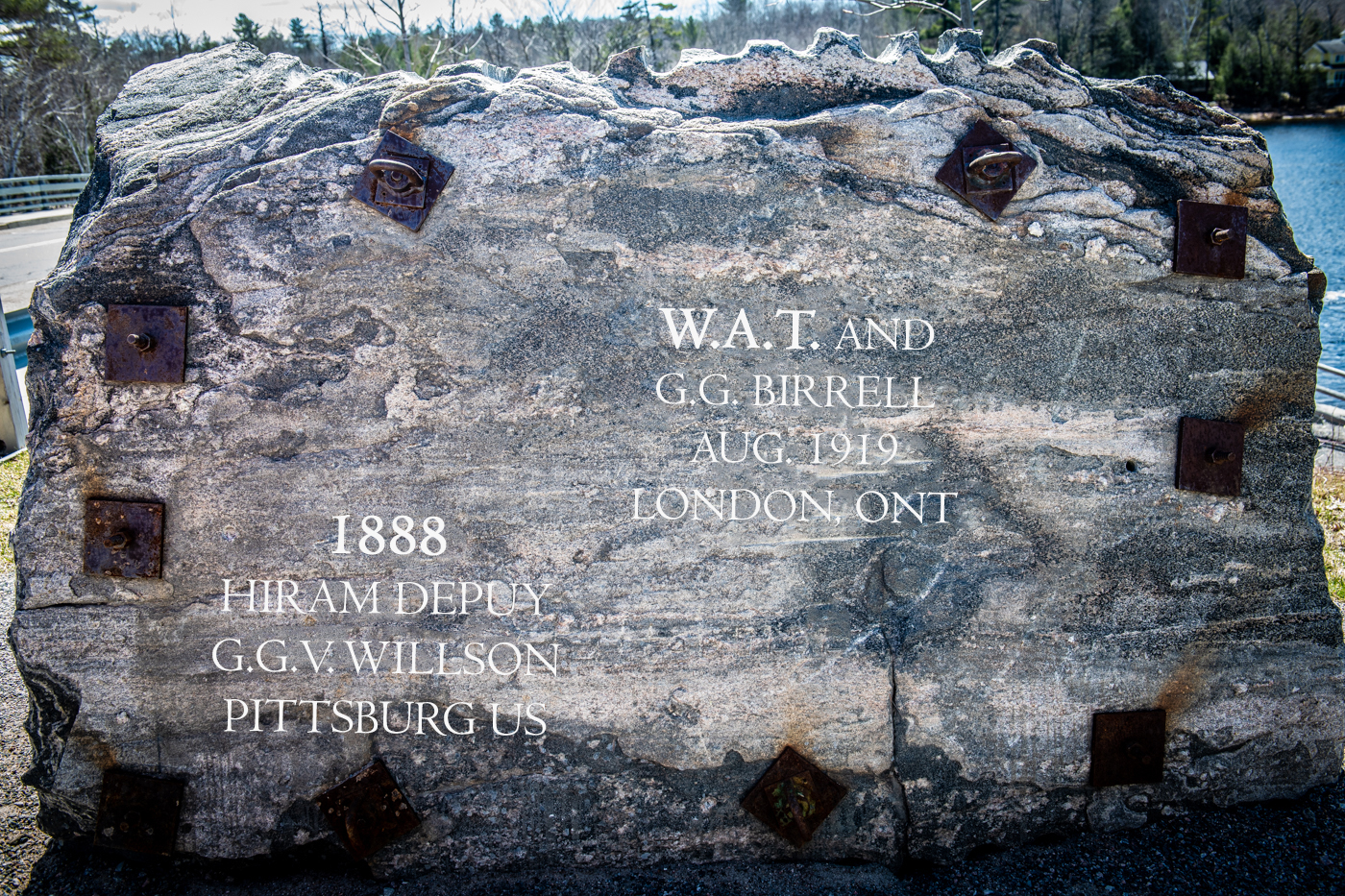 |
| Margaret Burgess Park |
Thomas and Margaret Burgess settled in this area in 1868, founding a settlement that would grow into a thriving sawmill town centred on the Bala Falls. The Bala Presbyterian Church was built here in 1926, following a split with the United Church of Canada. From 1916 until the early 1960's, Carr's Ice Cream Parlour (later known as the Arcadian Ice Cream parlour and Dance pavilion) occupied much of the land that is now Margaret Burgess Park. For many years, Carr's was the best-known restaurant in Bala, with its second-storey dance floor and popular balconies hanging over the falls. The buildings were demolished in the mid-1960's during the construction of the then-Highway 69 (now Muskoka Road 169) bridge. Today, the park remains a popular place to enjoy the Moon River. 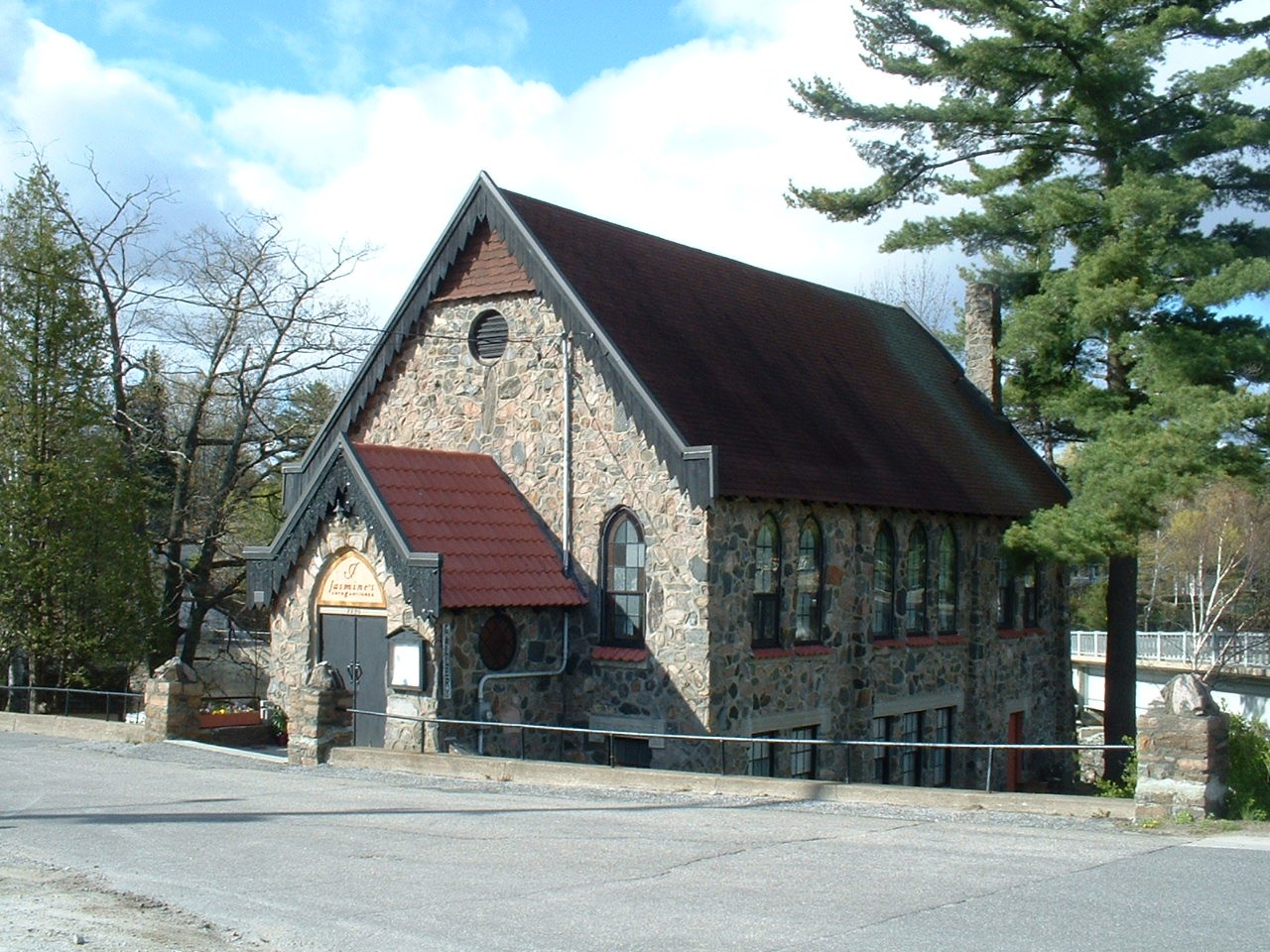 |
| Public Wharf, Bala |
|
This is where the historic steamboats operated by the Muskoka Lakes Navigation & Hotel Company used to dock in the heyday of Muskoka tourism. The steamboat company had a shed and ticket office right on the wharf. As recently as the 1950's you could take a 100 mile cruise from where you are standing. Your view includes at least five former summer hotels or boarding houses. The summer station was located between the town dock and the train tracks. The first train arrived in Bala on June 27, 1907 from Craighurst. It provided a link to the steamboats that came to Bala twice a day. For years, the 'Bala Special' left Toronto at 6 pm and arrived in Bala at 9:15 pm. In later years this service only operated on weekends. Friday and Sunday nights during the summers were crowded as fathers and husbands arrived on the train known as the 'Daddy Train'. This was one of the busiest tourist centres in all of Ontario for more than 30 years, as well as a stop on the transcontinental line. The station was torn down in the late 1950's. |
| Portage Landing |
In 1868, Thomas Burgess began selling supplies to the new settlers from his home. He later built and operated a store on what is now the parking lot opposite Portage Landing until his death in 1901. The store was demolished when the railway arrived in 1907, so his son John W. Burgess built the current Portage Landing. The new store offered customers groceries, boots, dry goods, hardware, and general merchandise.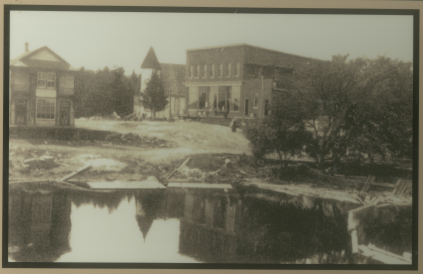 |
| Downtown Bala |
This property was originally the home of John W. Burgess and one of the finest homes in town, complete with its own tennis court. Some say that Burgess, a life-long temperance man like all his family, would turn over in his grave if he knew the property would one day be used as a liquor store.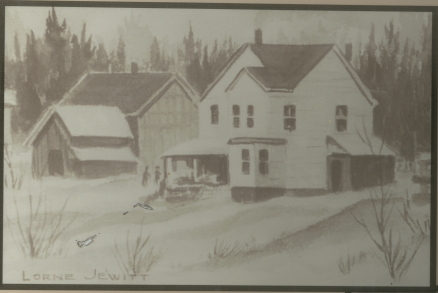 |
| Mill Street, Bala |
In 1875, Thomas Burgess opened his house as the first school in Bala. Several years later he erected a building on this site that was used as a school, community centre, and church. The two storey brick building that stands today was built in 1914 and the second storey was added in 1917. This school was closed in 1962 when the Muskoka Board of Education came into being. Today students are bused to Glen Orchard for elementary classes and Gravenhurst for secondary education.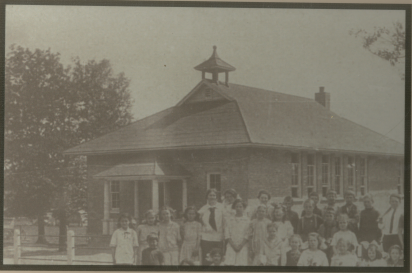 |
| Bala Community Centre |
The Bala Community Centre was originally built in 1950 under the direction of the Bala Women's Institute. It was given to the Town in 1953. The Bala Library was originally located in the Bala Public School. The Library moved to the Bala United Church in the late 1950's before moving to this site in 1970. The addition that currently houses the library was completed in 1994. |
| Bala Museum |
This former tourist home, known as Treelawn and later as Riverview Lodge, offered meals and overnight stays early in the 20th century. Its most famous guest was Lucy Maud Montgomery, the author of Anne of Green Gables, who enjoyed Treelawn's meals for two weeks in the midsummer of 1922. That holiday inspired LMM to write The Blue Castle (1926), an adult novel set entirely in Muskoka. Here, LMM proofread Emily of New Moon. Jack and Linda Hutton purchased the former tourist home in 1991 and turned it into Bala's Museum with Memories of Lucy Maud Montgomery. It has become an international tourist site, attracting 70,000 visitors in its first decade. |
Contact Us
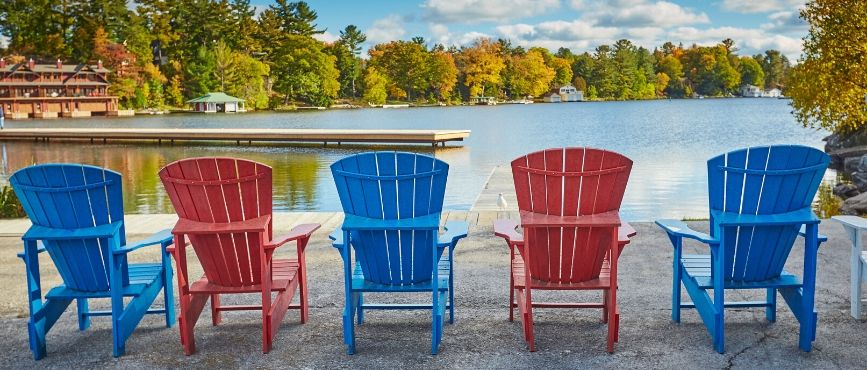
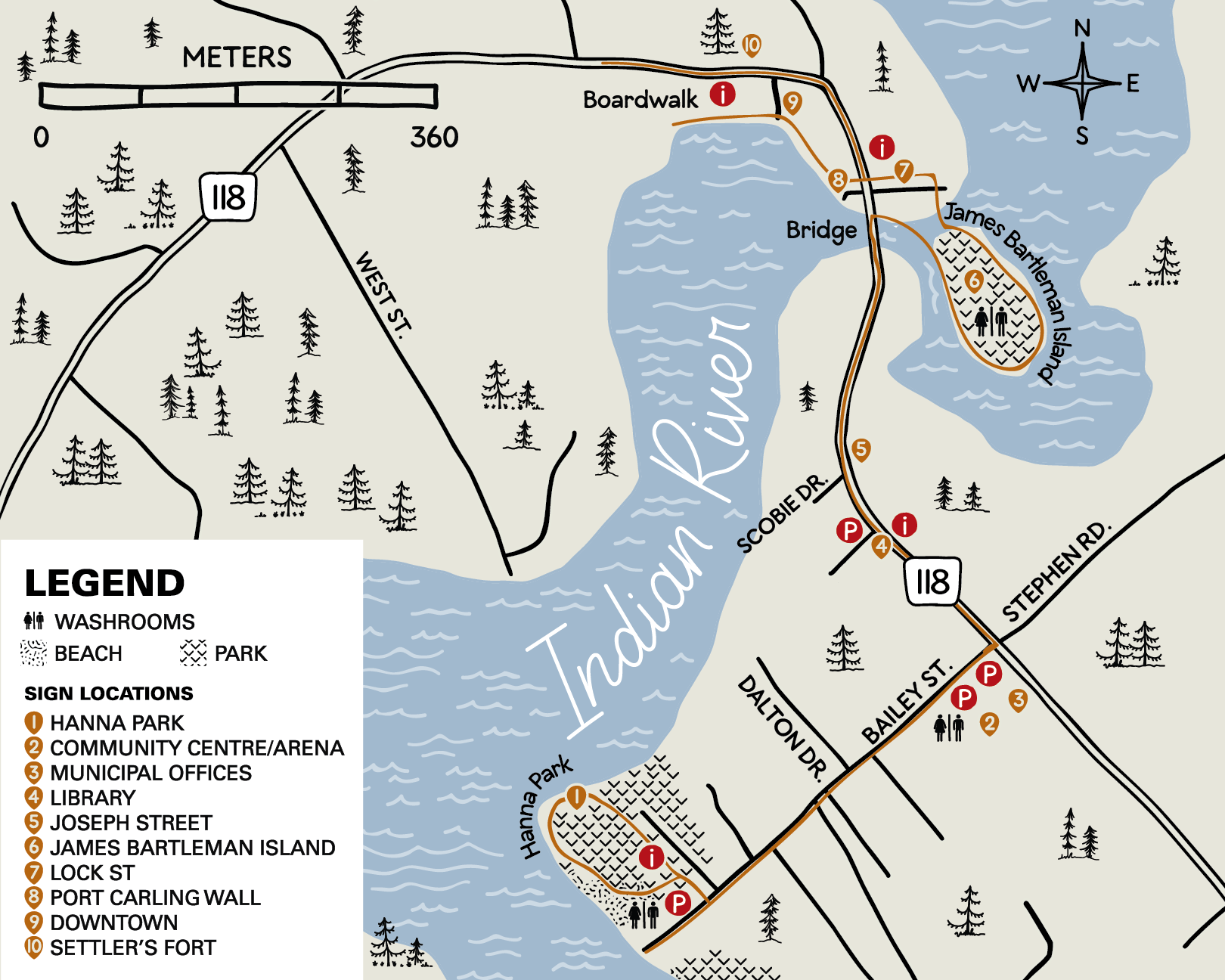

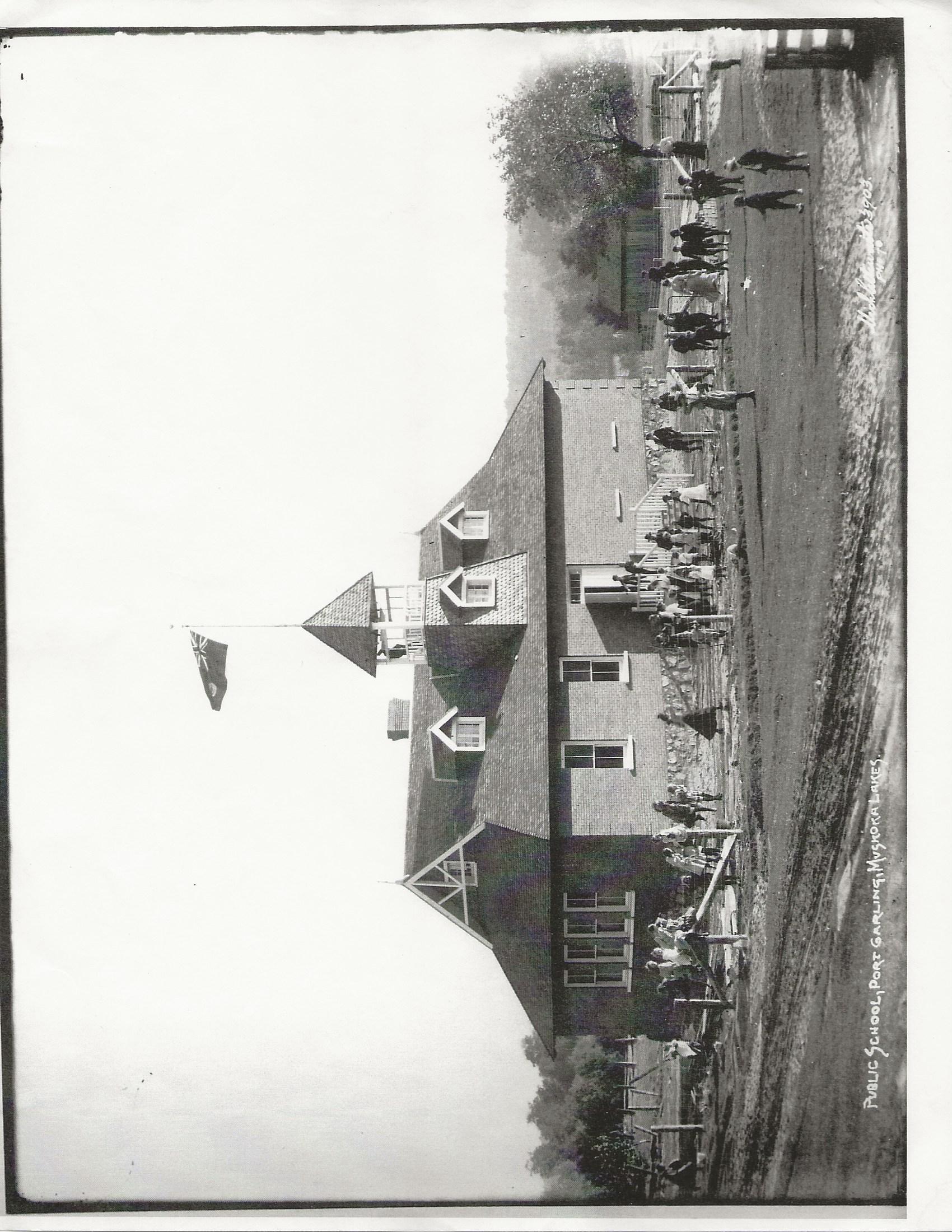
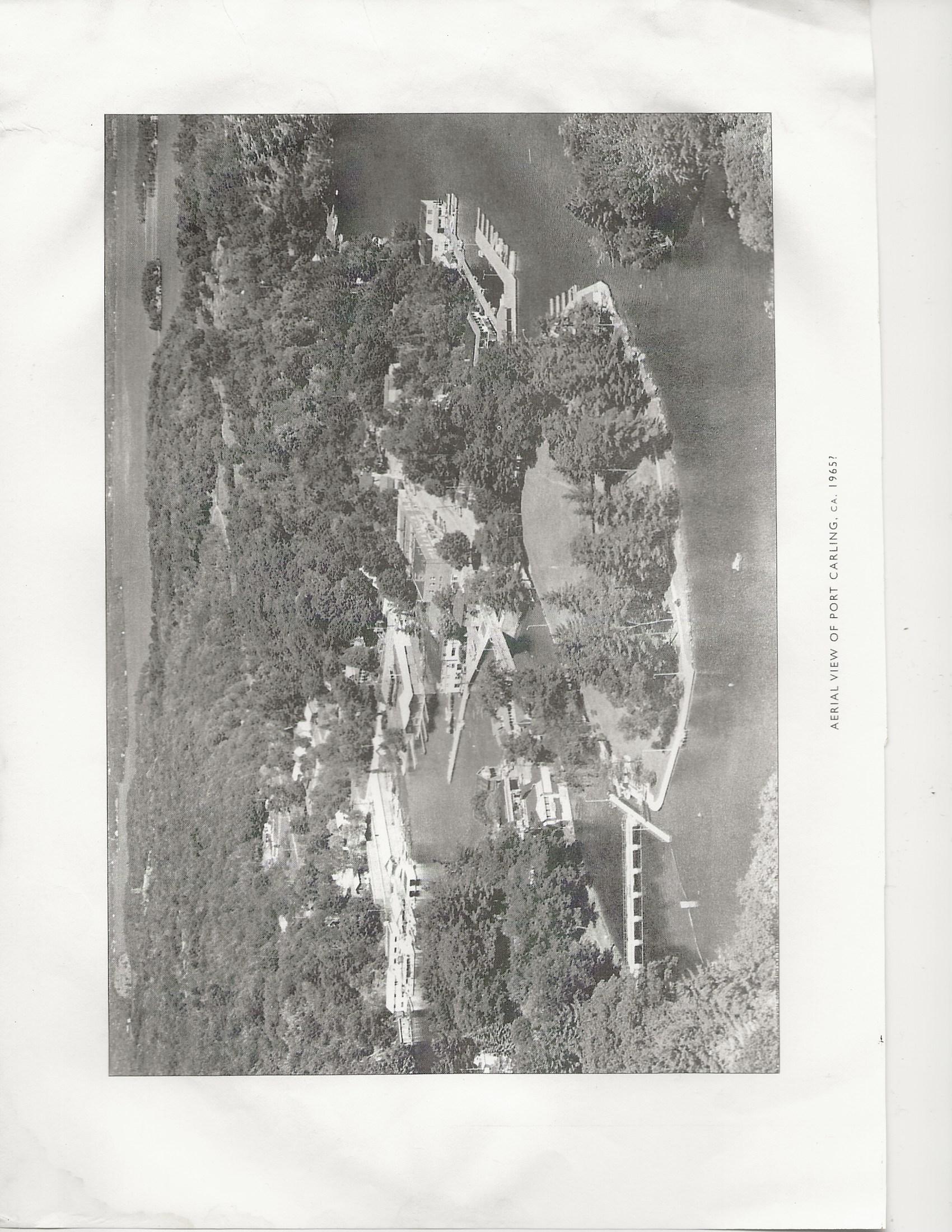
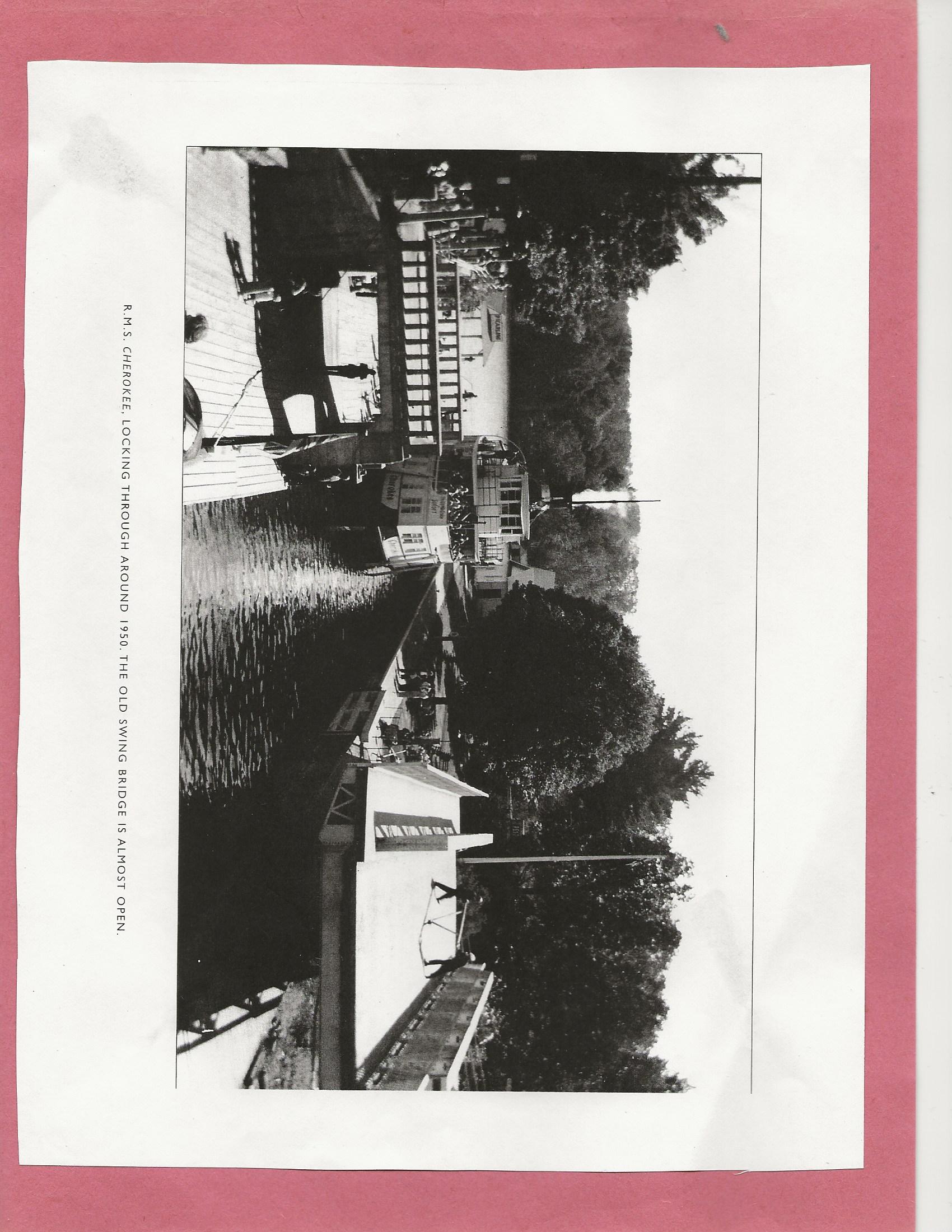
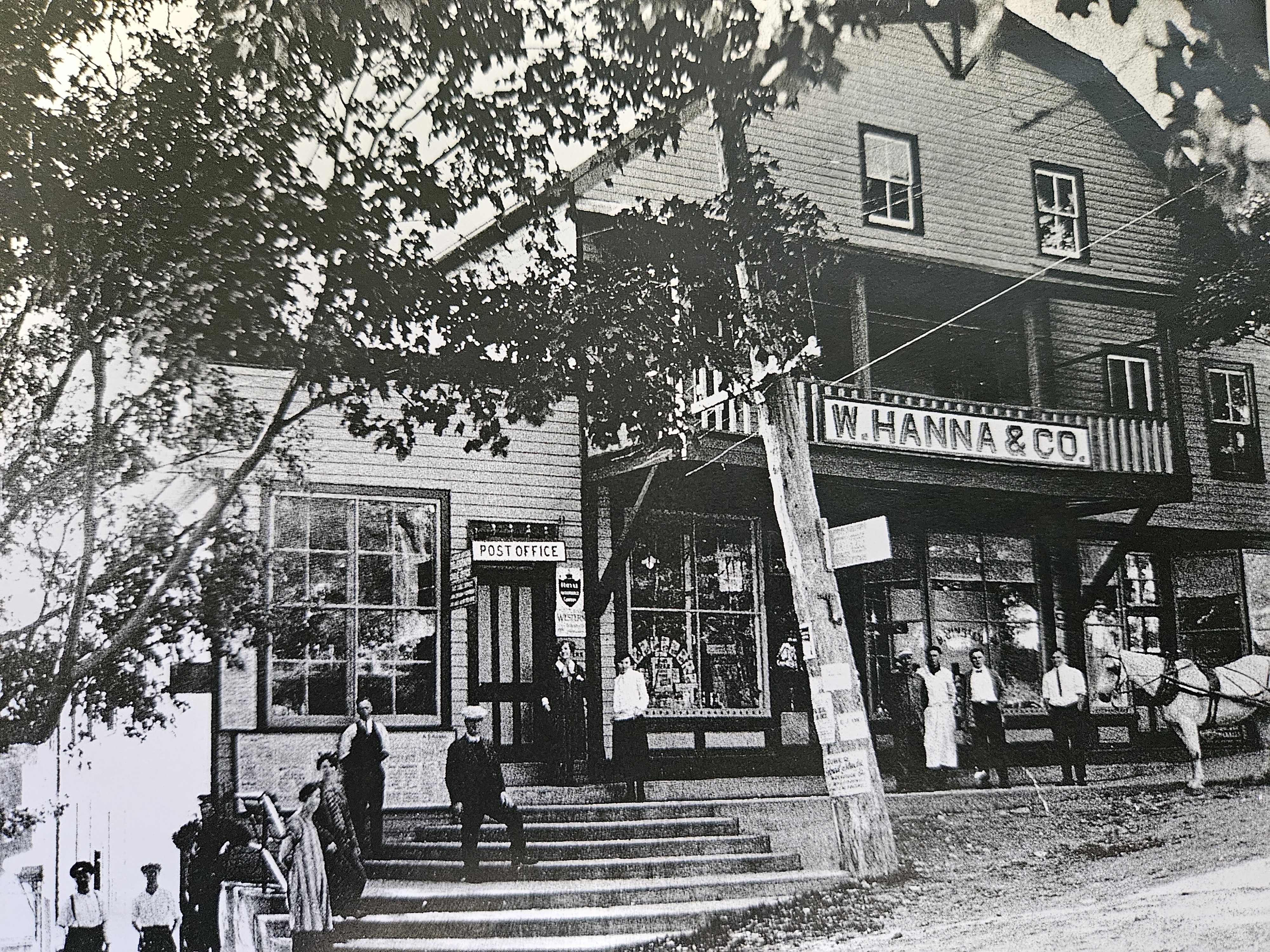
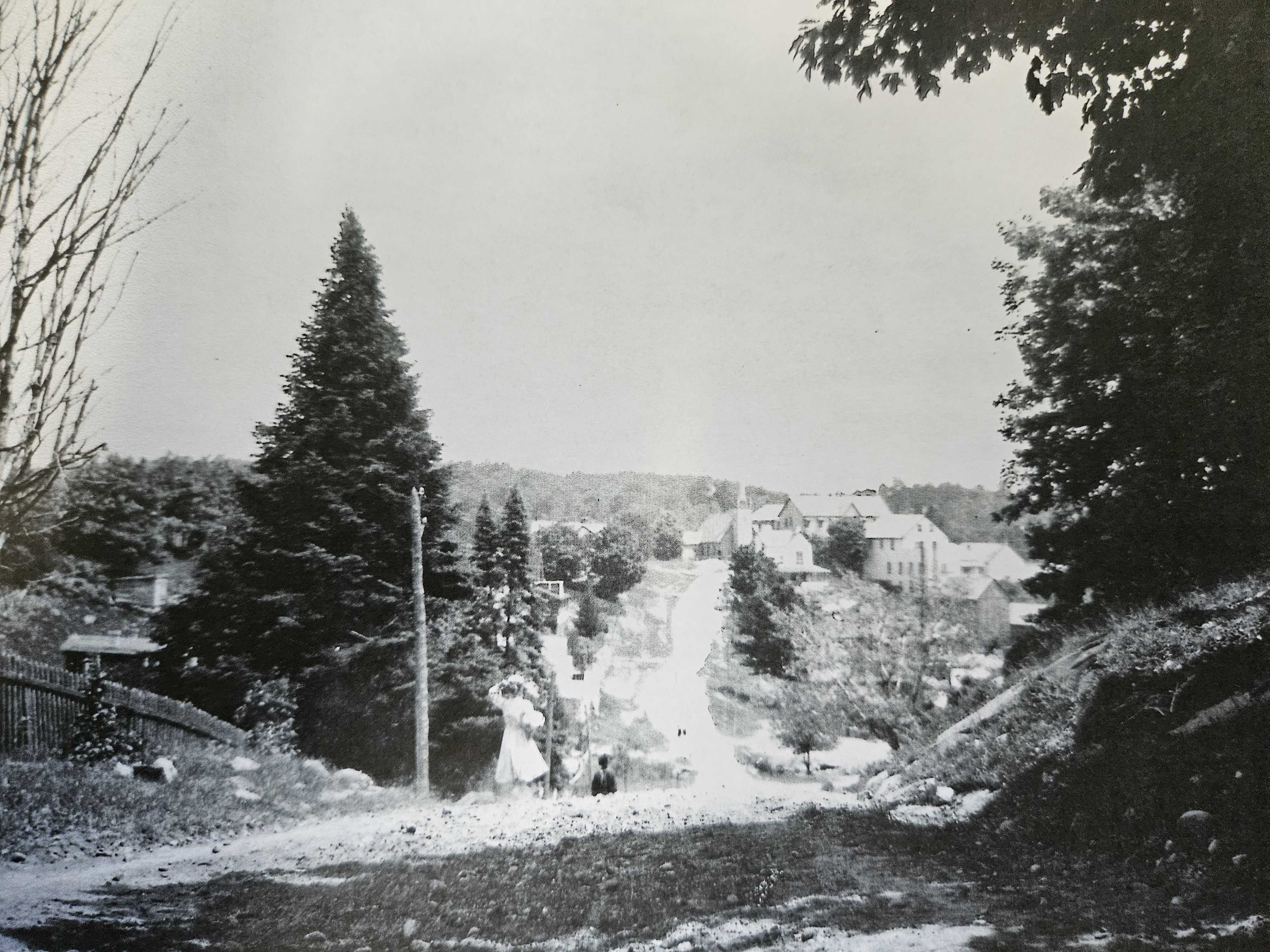
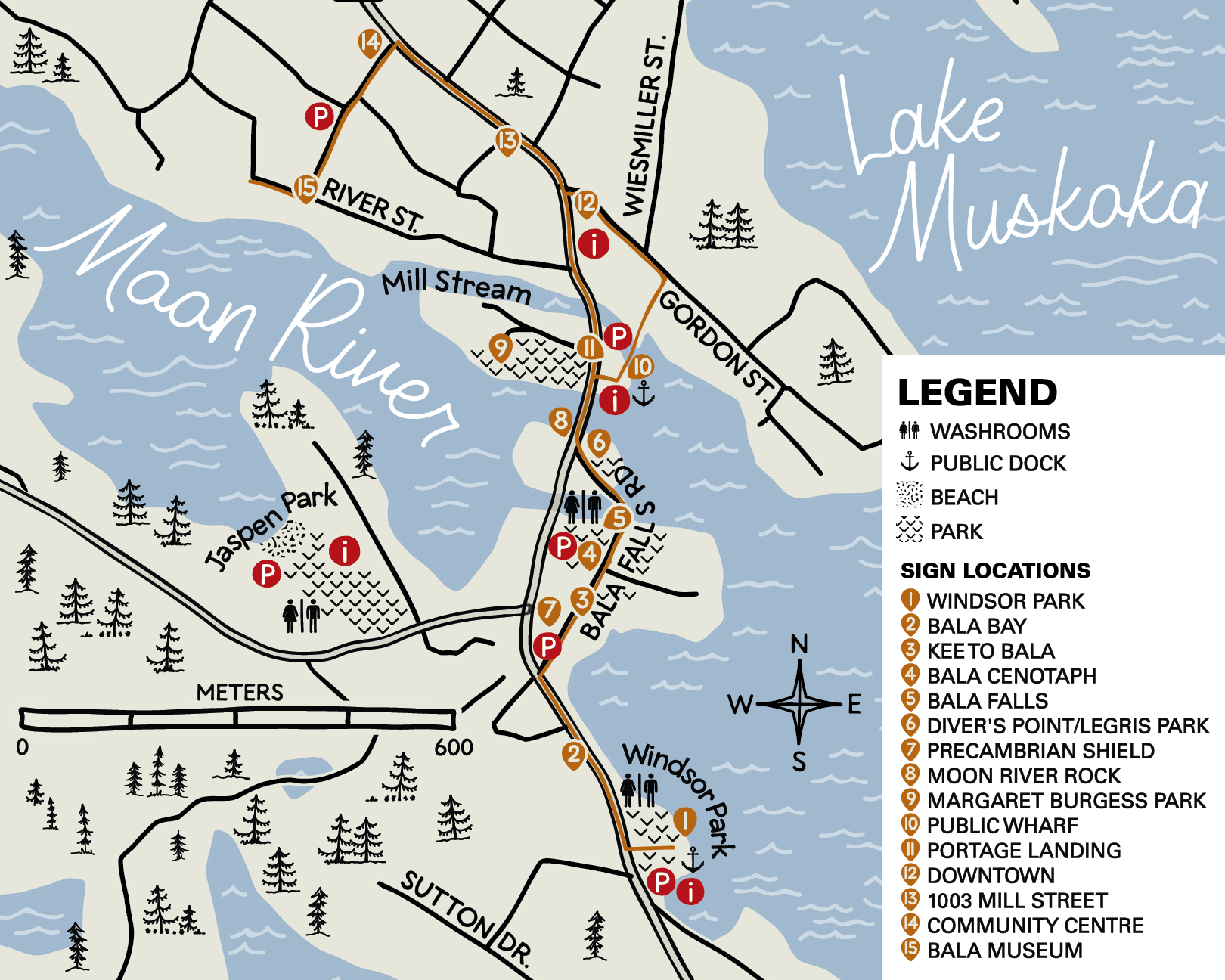
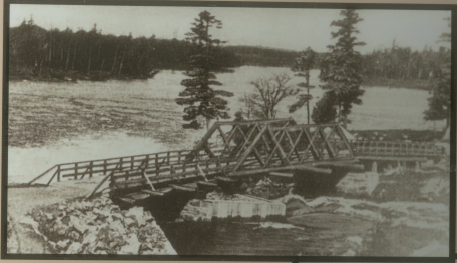
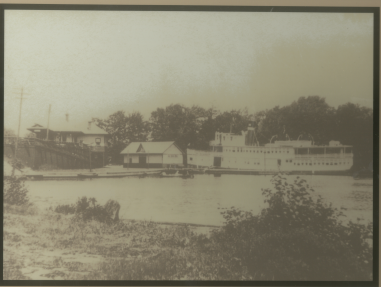

 Subscribe to this Page
Subscribe to this Page